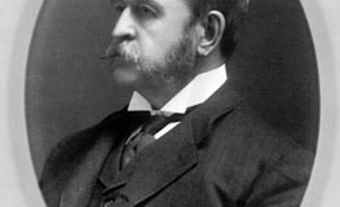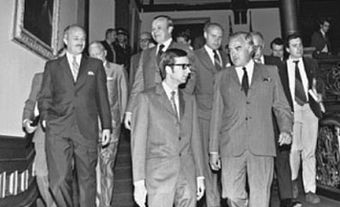Macdonald, John Sandfield
John Sandfield Macdonald, lawyer, politician, premier of Ontario 1867-72 (b at St Raphael, UC 12 Dec 1812; d at Cornwall, Ont 1 June 1872). "Sandfield" served as a subsurname for Macdonald's Highland Scottish family. After brief schooling, he articled in the offices of A. McLean and W.A. Draper, prominent Conservatives. He was called to the bar in 1840 and opened a practice in Cornwall. The following year he was drafted by local Conservatives and successfully contested the Glengarry seat for the first Assembly of the United PROVINCE OF CANADA. He was unique in that he served in all 8 parliaments of the United Province. Annoyed by the intransigent position of old-line Tories, he identified increasingly with Governors SYDENHAM and BAGOT. He supported Bagot's Council of Reformers in 1842 and followed his new associates into opposition when they clashed with Governor METCALFE in 1843. Thenceforth, he would remain a Reformer.From 1849 to 1851 he served as Robert BALDWIN's solicitor general for Canada West. When Francis HINCKS became Reform premier, he passed over Sandfield, who, though bitter, accepted election in 1852 as Speaker of the Assembly - a post he filled with great distinction. During political maneuvres of 1854, which led to the formation of a Liberal-Conservative ministry under Sir A.N. MACNAB, he severely criticized Lord ELGIN for alleged improprieties and thus became a leading figure in the disrupted Reform opposition, a role he shared with George BROWN.
The 2 Reformers became bitter antagonists, however, with Brown championing REP BY POP and a centralized federation and Sandfield advocating the "double majority," a requirement that the Cabinet hold the confidence of majorities from both Upper and Lower Canada, which would have ensured that the duality of the province would be more fully represented.
When the government of G.É. CARTIER fell in 1862, Lord MONCK called on Sandfield to form a Reform administration. Associating himself with the moderate L.V. SICOTTE, Sandfield, who served also as attorney general west, attempted to govern the increasingly divided province on the basis of his constitutional formula, but was thwarted by the Upper Canadian separate-school crisis. Reorganized with A.A. DORION as his associate and with more Rouge and Grit involvement, his ministry struggled on until it fell in March 1864. It was Sandfield who then introduced the idea of a coalition.
Yet the GREAT COALITION of June 1864, which brought together John A. MACDONALD, Cartier and Brown, isolated Sandfield, who opposed both the concept of FEDERALISM and the notion of union with the Maritimes. He particularly feared Toronto domination of his St Lawrence Valley region. He denounced the federal plan as being too conservative and its process of implementation as arbitrary and even unconstitutional. Nevertheless, being basically a Reform-minded pragmatist, by early 1867 he gently bowed to the inevitable.
John A. Macdonald became prime minister and helped engineer the selection of Sandfield as the first premier of Ontario. "Hunting in pairs," the 2 Macdonalds won the concurrent federal and provincial elections. Sandfield's ministry was of considerable distinction, frugal yet creative, and despite opposition assertions to the contrary he was no puppet of the prime minister. By 1871, however, he was gravely ill and, after an inconclusive election that was followed by the desertion of a few coalition Reformers, he resigned that December. In his place, Edward BLAKE inaugurated 34 years of Liberal rule.

 Share on Facebook
Share on Facebook Share on X
Share on X Share by Email
Share by Email Share on Google Classroom
Share on Google Classroom


